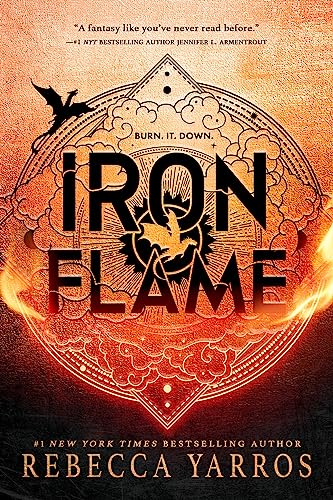Travelling by train in Europe is already faster than airline at present, and Japan is testing a “high” type for its popular high-speed trains, set for 2023 delivery before the next Winter Olympics. You can’t ride that one now, but there is more than one train available to speed up your journey. Here are the fastest-growing trains in the world in commerce, calculated by speed:
10. Thalys: 186 mph

Interfacing Amsterdam, Brussels, Paris, and Cologne with numerous day-by-day benefits, Thalys is one of Europe’s most significant railroad lines for diversion and voyagers; truth be told, its event is very likely the difference between the two sectors. In December 2015 the German course was stretched out to Dortmund, however, the Brussels-to-Paris run stays basic, accomplishing the greater part of the business.
9. Eurostar e320 and TGV: 200 mph

Both the TGV and Eurostar e320 trains are tied for the next in the list, but the last one was redesigned in 2015. Named at its top speed of 320 km/hr (200 mph), the e320 series is the tip-to-tail restart of the Eurostar train in the company’s 22-year history. Speedier trains — 20 km/hr faster than before, the E300 series — are able to take you another 15 minutes from the zippy Eurostar two-hour journey between Brussels, Paris, and London (and Amsterdam, in the not-so-distant future). As Eurostar transports its passengers to the centre of each city and the fare is available via Rail Europe from $ 70 on the other hand, it’s amazing that anyone is still flying between cities.
8. Korail KTX: 205 mph

South Korea’s high-speed rail network is far from new (KTX was paid in 2004), but it holds its position among the fastest. The latest route opened during the 2018 Winter Olympics, connects Incheon International Airport to the west with the eastern city of Gangneung, stopping in Seoul by the way. KTX cuts travel time to reach the Pyeongchang ski slopes from six hours by regular train to less than two hours.
7. Deutsche Bahn ICE: 205 mph

The contrasting white and silver Inter-City Express, or ICE paired with a sharp red cheatline, makes for a great view that runs at high speeds in the German countryside, especially on its new route linking Berlin with Munich. Similar to the Spanish train at Renfe AVE, the German high-speed train is an alternative to Nokia, the Velaro, and was built to be tuned with a Channel Tun tun. That is a serious asset for DeutscheBahn’s long-term plans to use these trains from Frankfurt to London.
6. Haramain Western Railway: 217 mph

The fastest Mecca-Medina link removes 281 kilometres between the holy cities of Saudi Arabia and has been operating slowly since December 2017, fully completed by early summer 2018. Travelling the length of the road takes about two and a half hours, compared to five hours by car. The speed is not all the attribute of this train, though; Haramin is expected to carry around 3 million passengers a year, including many Hajj and Umrah pilgrims, reducing traffic congestion.
5. Renfe AVE: 217 mph

The fastest Spanish train is the Velaro E by Nokia, and is used for long distances to Spanish cities and beyond: Traveling from Barcelona to Paris can now be reached by a six-hour high-speed train.
4. The Italo and Frecciarossa: 220 mph

Italian commuter train operators, NTV and Trenitalia, each show the fastest train in Europe, capable of moving passengers from Milan to Florence or Rome in less than three hours, with a new way to court in Perugia this year. The Frecciarossa, or “red arrow,” was unveiled during Expo 2015, held in Milan, and the train is as remarkable for its speed as its design; parts of it are probably obese and renewable.
3. Shinkansen H5 and E5: 224 mph

Japan celebrates 54 years of the high-speed train this year because it was way back in 1964 when the Hikari train started service between Tokyo and Osaka, shortening travel time between the two major cities of the country from about seven to four hours by train. The H5 and E5 Shinkansen Ships, respectively running the services of Tohoku and Hokkaido, are the two newest trains that follow the Japanese tracks, and so far the fastest in commercial operation in the country.
2. Fuxing Hao CR400AF/BF: 249 mph

China once again serves as the home of the world’s fastest-growing railroad in the world. The name “Fuxing Hao” translates to “renewal,” and each and every train is labelled with a nickname: CR400AF is “Dolphin Blue,” and CR400BF is “Golden Phoenix.” “CR” stands for China Railway. Both take less than five hours to reach 556 passengers each between Beijing South and Shanghai Hongqiao Station, easily crossing the 10-hour interval to take the regular, parallel train. Two megalopolises. This “Rejuvenation” also beats China’s next fastest train, the “Harmony” CRH380A; It has been outstanding since 2010, with speeds up to 236 mph on the roads linking Shanghai and Nanjing with Hangzhou, and Wuhan and Guangzhou.
1. Shanghai Maglev: 267 mph

The fastest train in the world is not the newest, hottest, or most expensive train. Charging $ 8 per person, per ride, Maglev travels approximately 19 miles from Shanghai International Airport to Longyang Municipal Station outside Shanghai. You are right – the train, which takes just 7 minutes to complete the trip using levitation (maglev) technology, is not moving to the city centre. As such, the vast majority of passengers since its inception in 2004 have been travellers returning from the airport, cameras popping up, and ready to take a snapshot of the speed limit when the train reaches 431 km/hr (267 mph).
- What is faster than a bullet train?
What is faster than a fast bullet, a phrase used to describe Superman? The new Shinkansen, or Japanese train. Japan Rail has announced the construction of an electric train that will use speeds of more than 600 kilometres per hour (374 miles per hour), or one mile (1.5km) every 10 seconds.
Also Read: Top 10 Richest Airlines In The World











